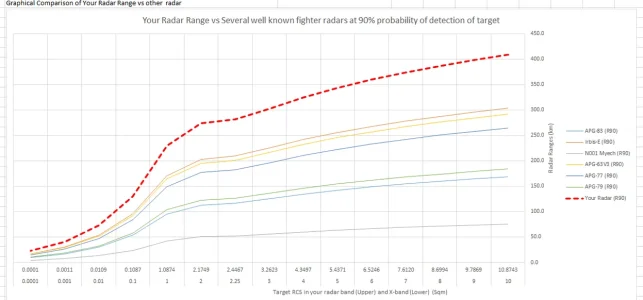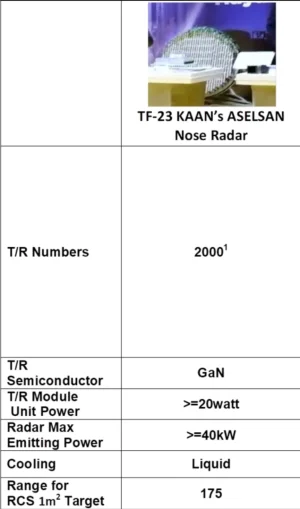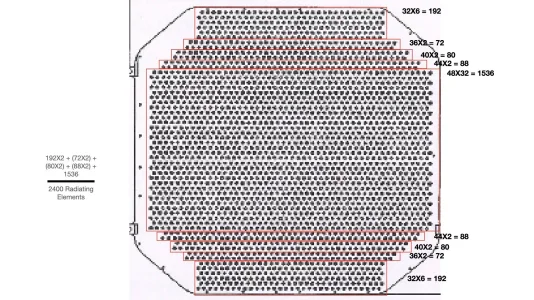- Joined
- Jun 30, 2024
- Messages
- 1,840
- Likes
- 23,440
But what about the power requirement?? You think the Al-31FPs be able to generate enough power??Putting its "mini-AWACS" status back on track.
If I am not wrong this makes Virupaksha the only nose-mounted radar to have so many TRM modules.
We should really look into converting Su-30MKIs airframe into composite like J-16s.

So soon the most capable AESA radar would be ours. Closely followed by ASELSAN's.With 12 kW peak power output of each TRM, Virupaksha will have a range of 296 km against a 3sqm target at PD 90. At PD 50 this increases to 441 km.
PD is probability of detection.
View attachment 11702
Against a 0.1 sqm targets, range is atleast 100 km for PD 90. This figure will increase for PD 50. Meaning J-20A can be detected and tracked at long enough ranges which will allow BVR engagement.
Virupaksha may have a 26.5 kW peak power rating based on the heat exchanger shown in last Aero India. It's range will be much higher than the much vaunted APG-77 on Raptor. It will even outranged the mighty beast Irbis.
And best thing is GaN TRMM require 1/5 th the power of GaAs for the same power output. So electrical power availability on Su-30MKI won't be a constraint.

You mean 12 Watt, right??With 12 kW peak power output of each TRM, Virupaksha will have a range of 296 km against a 3sqm target at PD 90. At PD 50 this increases to 441 km.
PD is probability of detection.
View attachment 11702
Against a 0.1 sqm targets, range is atleast 100 km for PD 90. This figure will increase for PD 50. Meaning J-20A can be detected and tracked at long enough ranges which will allow BVR engagement.
Virupaksha may have a 26.5 kW peak power rating based on the heat exchanger shown in last Aero India. It's range will be much higher than the much vaunted APG-77 on Raptor. It will even outranged the mighty beast Irbis.
And best thing is GaN TRMM require 1/5 th the power of GaAs for the same power output. So electrical power availability on Su-30MKI won't be a constraint.
20??!!So soon the most capable AESA radar would be ours. Closely followed by ASELSAN's.
No USA, no France, no Russia
View attachment 11703
> rare W for two of the most rabid online defence fanbois

Abhi bandar ke haath mein talwar pakadwa doge toh aisa hi hoga na??What has happened to these Govt PSU?? Why suddenly posting these worth less updates??
Making a mockery of themselves and us Indian on Twitter!!
yaar, who the hell runs this handle. downright embarassing.
View: https://x.com/HALHQBLR/status/1843184276466245748
There should be zero trust on American companies regarding consultancy & TOT.
View: https://x.com/alpha_defense/status/1844280612481581401?t=dXR758JBcXVZLMAFbRkjFg&s=19


